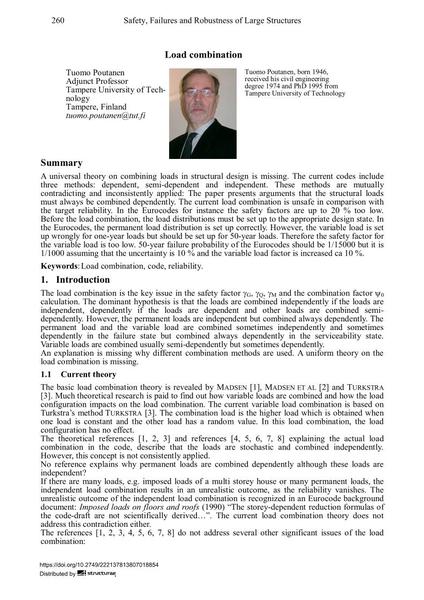Load Combination

|
|
|||||||||||
Bibliographic Details
| Author(s): |
Tuomo Poutanen
|
||||
|---|---|---|---|---|---|
| Medium: | conference paper | ||||
| Language(s): | English | ||||
| Conference: | IABSE Workshop: Safety, Failures and Robustness of Large Structures, Helsinki, Finland, 14-15 February 2013 | ||||
| Published in: | IABSE Workshop, 14-15 February 2013, Helsinki | ||||
|
|||||
| Page(s): | 260-267 | ||||
| Total no. of pages: | 8 | ||||
| Year: | 2013 | ||||
| DOI: | 10.2749/222137813807018854 | ||||
| Abstract: |
A universal theory on combining loads in structural design is missing. The current codes include three methods: dependent, semi-dependent and independent. These methods are mutually contradicting and inconsistently applied: The paper presents arguments that the structural loads must always be combined dependently. The current load combination is unsafe in comparison with the target reliability. In the Eurocodes for instance the safety factors are up to 20 % too low. Before the load combination, the load distributions must be set up to the appropriate design state. In the Eurocodes, the permanent load distribution is set up correctly. However, the variable load is set up wrongly for one-year loads but should be set up for 50-year loads. Therefore the safety factor for the variable load is too low. 50-year failure probability of the Eurocodes should be 1/15000 but it is 1/1000 assuming that the uncertainty is 10 % and the variable load factor is increased ca 10 %. |
||||
| Keywords: |
reliability code load combination
|
||||
